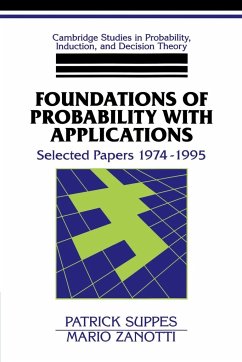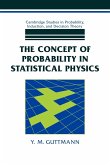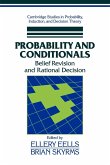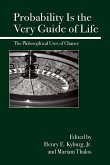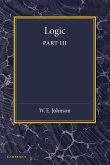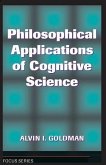Patrick SuppesSelected Papers 1974 1995
Foundations of Probability with Applications
Selected Papers 1974 1995
Herausgeber: Skyrms, Brian; Binmore, Ken
Patrick SuppesSelected Papers 1974 1995
Foundations of Probability with Applications
Selected Papers 1974 1995
Herausgeber: Skyrms, Brian; Binmore, Ken
- Broschiertes Buch
- Merkliste
- Auf die Merkliste
- Bewerten Bewerten
- Teilen
- Produkt teilen
- Produkterinnerung
- Produkterinnerung
This is an important collection of essays by a leading philosopher, dealing with the foundations of probability.
Andere Kunden interessierten sich auch für
![The Concept of Probability in Statistical Physics The Concept of Probability in Statistical Physics]() Y. M. GuttmannThe Concept of Probability in Statistical Physics46,99 €
Y. M. GuttmannThe Concept of Probability in Statistical Physics46,99 €![Probability and Conditionals Probability and Conditionals]() Ellery Eells / Brian Skyrms (eds.)Probability and Conditionals46,99 €
Ellery Eells / Brian Skyrms (eds.)Probability and Conditionals46,99 €![Probability Is the Very Guide of Life: The Philosophical Uses of Chance Probability Is the Very Guide of Life: The Philosophical Uses of Chance]() Probability Is the Very Guide of Life: The Philosophical Uses of Chance27,99 €
Probability Is the Very Guide of Life: The Philosophical Uses of Chance27,99 €![Logic, Part 3, the Logical Foundations of Science Logic, Part 3, the Logical Foundations of Science]() W. E. JohnsonLogic, Part 3, the Logical Foundations of Science44,99 €
W. E. JohnsonLogic, Part 3, the Logical Foundations of Science44,99 €![Foundations of The Philosophy of Value Foundations of The Philosophy of Value]() H. OsborneFoundations of The Philosophy of Value37,99 €
H. OsborneFoundations of The Philosophy of Value37,99 €![Wittgenstein, Finitism, and the Foundations of Mathematics Wittgenstein, Finitism, and the Foundations of Mathematics]() Mathieu MarionWittgenstein, Finitism, and the Foundations of Mathematics71,99 €
Mathieu MarionWittgenstein, Finitism, and the Foundations of Mathematics71,99 €![Philosophical Applications Of Cognitive Science Philosophical Applications Of Cognitive Science]() Alvin I. GoldmanPhilosophical Applications Of Cognitive Science53,99 €
Alvin I. GoldmanPhilosophical Applications Of Cognitive Science53,99 €-
-
-
This is an important collection of essays by a leading philosopher, dealing with the foundations of probability.
Produktdetails
- Produktdetails
- Verlag: Cambridge University Press
- Seitenzahl: 208
- Erscheinungstermin: 22. August 2003
- Englisch
- Abmessung: 229mm x 152mm x 12mm
- Gewicht: 346g
- ISBN-13: 9780521568357
- ISBN-10: 0521568358
- Artikelnr.: 22044263
- Herstellerkennzeichnung
- Libri GmbH
- Europaallee 1
- 36244 Bad Hersfeld
- gpsr@libri.de
- Verlag: Cambridge University Press
- Seitenzahl: 208
- Erscheinungstermin: 22. August 2003
- Englisch
- Abmessung: 229mm x 152mm x 12mm
- Gewicht: 346g
- ISBN-13: 9780521568357
- ISBN-10: 0521568358
- Artikelnr.: 22044263
- Herstellerkennzeichnung
- Libri GmbH
- Europaallee 1
- 36244 Bad Hersfeld
- gpsr@libri.de
Part I. Foundations of Probability: 1. Necessary and sufficient conditions
for existence of a unique measure strictly agreeing with a qualititative
probability ordering; 2. Necessary and sufficient qualitative axioms for
conditional probability; 3. On using random relations to generate upper and
lower probabilities; 4. Conditions on upper and lower probabilities to
imply probabilities; 5. Qualitative axioms for random-variable
representation of extensive quantifiers; Part II. Causality and Quantum
Mechanics: 6. Stochastic incompleteness of quantum mechanics; 7. On the
determinism of hidden variable theories with strict correlation and
conditional statistical independence of observables; 8. A new proof of the
impossibility of hidden variables using the principles of exchangeability
and identity of conditional distribution; 9. When are probabilistic
explanations possible?; 10. Causality and symmetry; 11. New Bell-type
inequalities for N>4 necessary for existence of a hidden variable; 12.
Existence of hidden variables having only upper probabilities; Part III.
Applications in Education: 13. Mastery learning of elementary mathematics:
theory and data.
for existence of a unique measure strictly agreeing with a qualititative
probability ordering; 2. Necessary and sufficient qualitative axioms for
conditional probability; 3. On using random relations to generate upper and
lower probabilities; 4. Conditions on upper and lower probabilities to
imply probabilities; 5. Qualitative axioms for random-variable
representation of extensive quantifiers; Part II. Causality and Quantum
Mechanics: 6. Stochastic incompleteness of quantum mechanics; 7. On the
determinism of hidden variable theories with strict correlation and
conditional statistical independence of observables; 8. A new proof of the
impossibility of hidden variables using the principles of exchangeability
and identity of conditional distribution; 9. When are probabilistic
explanations possible?; 10. Causality and symmetry; 11. New Bell-type
inequalities for N>4 necessary for existence of a hidden variable; 12.
Existence of hidden variables having only upper probabilities; Part III.
Applications in Education: 13. Mastery learning of elementary mathematics:
theory and data.
Part I. Foundations of Probability: 1. Necessary and sufficient conditions
for existence of a unique measure strictly agreeing with a qualititative
probability ordering; 2. Necessary and sufficient qualitative axioms for
conditional probability; 3. On using random relations to generate upper and
lower probabilities; 4. Conditions on upper and lower probabilities to
imply probabilities; 5. Qualitative axioms for random-variable
representation of extensive quantifiers; Part II. Causality and Quantum
Mechanics: 6. Stochastic incompleteness of quantum mechanics; 7. On the
determinism of hidden variable theories with strict correlation and
conditional statistical independence of observables; 8. A new proof of the
impossibility of hidden variables using the principles of exchangeability
and identity of conditional distribution; 9. When are probabilistic
explanations possible?; 10. Causality and symmetry; 11. New Bell-type
inequalities for N>4 necessary for existence of a hidden variable; 12.
Existence of hidden variables having only upper probabilities; Part III.
Applications in Education: 13. Mastery learning of elementary mathematics:
theory and data.
for existence of a unique measure strictly agreeing with a qualititative
probability ordering; 2. Necessary and sufficient qualitative axioms for
conditional probability; 3. On using random relations to generate upper and
lower probabilities; 4. Conditions on upper and lower probabilities to
imply probabilities; 5. Qualitative axioms for random-variable
representation of extensive quantifiers; Part II. Causality and Quantum
Mechanics: 6. Stochastic incompleteness of quantum mechanics; 7. On the
determinism of hidden variable theories with strict correlation and
conditional statistical independence of observables; 8. A new proof of the
impossibility of hidden variables using the principles of exchangeability
and identity of conditional distribution; 9. When are probabilistic
explanations possible?; 10. Causality and symmetry; 11. New Bell-type
inequalities for N>4 necessary for existence of a hidden variable; 12.
Existence of hidden variables having only upper probabilities; Part III.
Applications in Education: 13. Mastery learning of elementary mathematics:
theory and data.

